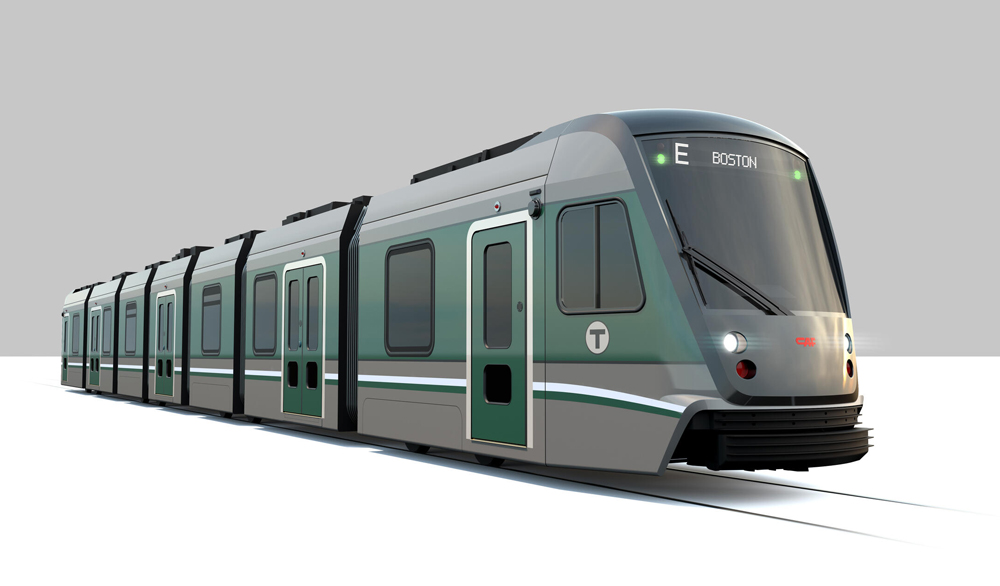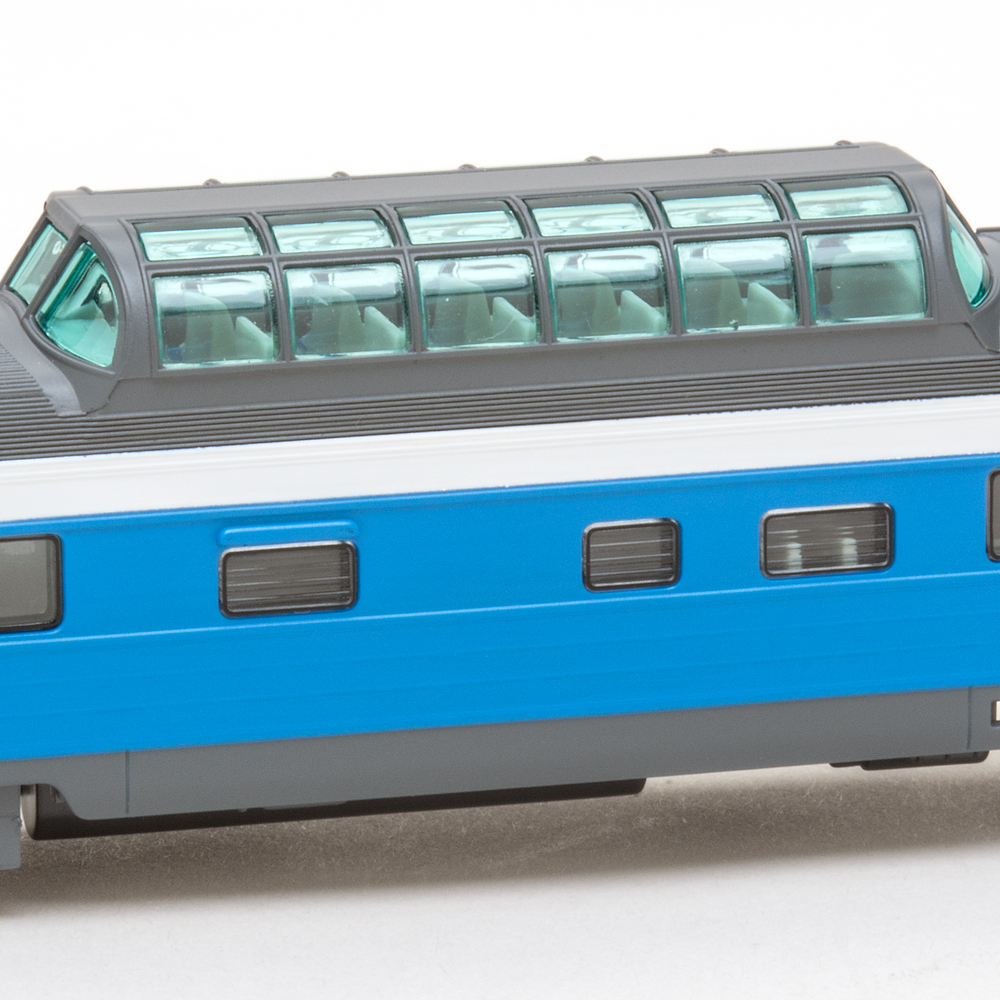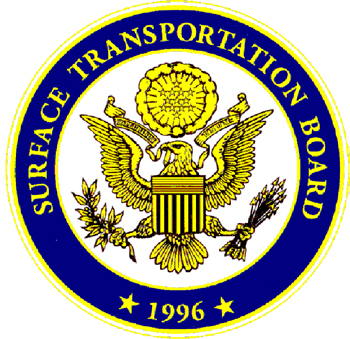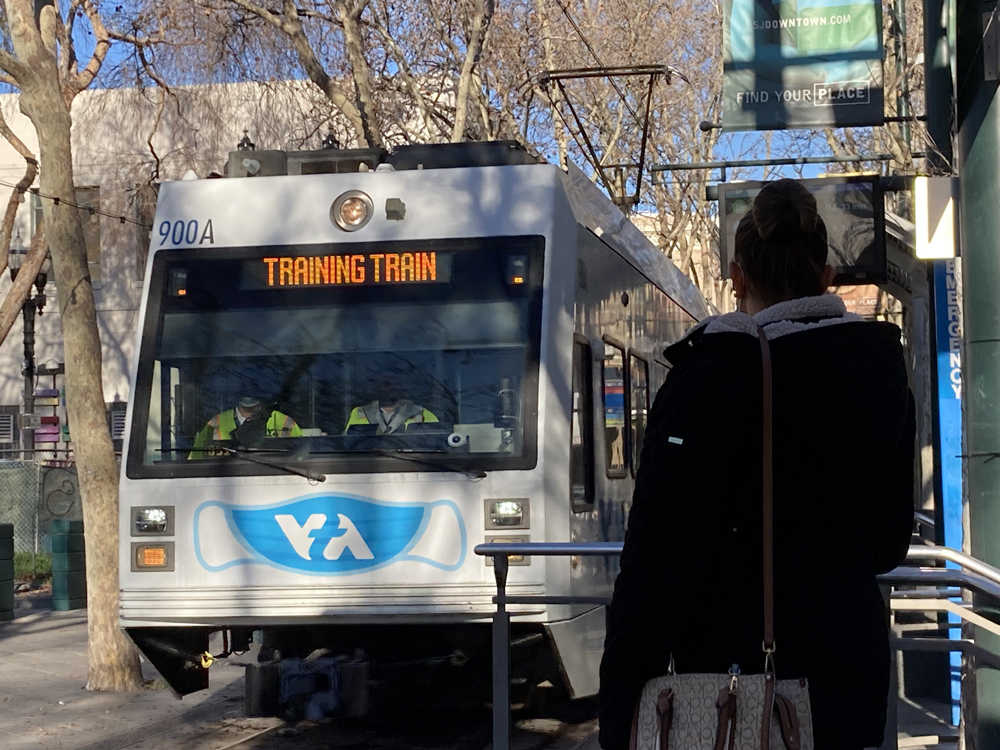
BOSTON — The Massachusetts Bay Transportation Authority has unveiled the paint scheme for its next generation of Green Line light rail equipment, selected through an online survey of riders as well as employee feedback.
The winning design was the third of three options in a poll conducted Oct. 2-13. It features a dark green and gray body with green doors and a white and turquoise lower stripe. It will be applied to the Type 10 “Supercars,” 102 of which are to be built by CAF USA under a contract for more than $810 million awarded last year [see “MBTA approves contract with CAF USA …,” Trains News Wire, Sept. 2, 2022].
“I thank our riders for taking the time to engage with us on the exterior design of the new Type 10 Green Line supercars,” MBTA CEO Phillip Eng said in a press release. “We value the time that it takes to vote, and the fact that we heard directly from thousands of riders demonstrates the importance of these new Green Line cars to the public. It’s important for riders to know that we care about both their safety and also their experiences on the system, and we are incorporating their feedback into our decision-making.”
At the time the contract was approved, the first of the new cars was expected to enter service in 2027. The MBTA anticipates a mock-up of the new equipment will be available next year for public review and comment.














One more comment on these new LRV cars. While the final design might be modified somewhat, while looking at this drawing these cars look like a caterpillar
on rails- about 6or 7 mini units joined together as a train. Also does the designation of these cars change from an LRV unit or trainset because basically it is now a trainset.
Joseph C. Markfelder
Pretty much like the New York City Subway system. While the IND and BMT divisons are just about the same with height and track and wide clearences in most parts and equipment can be interchanged between lines of the IND and BMT, the IRT is a divison unto itself. Narrower dimensions, tight hairpin turns and smaller subway cars. For this reason, While the NYC subway might be unified in name only with various transfer points throughout the system, the IRT and combined BMT-IND diviisons cannot be interchanged or even connected trackwise due to the different size and clearance restrictions. Even the PATH system could never be connected physically to the NYC subway as there were and still are plans to someday connect both systems creating a seamless ride between NYC and New Jersey. The PATH system is also shorter, with very tight clearances and narrow tunnels and even shorter PATH cars , shorther then the IRT fleet. Standardization can never be fully achieved neither in New York or Boston and if were possible which could be would require a total makeover and construction of both systems, an enormous and almost impossible cost to do running into billions of dollars which nobody is going to do or spend on. Good connections and transfer points and with improvements to the transit system is what works best and most efficiently.
Joseph C. Markfelder
There’s several track connections between the two divisions and IRT equipment does travel through the “B” Division for non-revenue (no passenger) movements to/from various maintenance facilities.
..and to add to John Landey’s comment; the Blue Line was originally built for streetcars and was converted to heavy rail in 1924. Due to restrictions in tunnels, the Blue Line cars are shorter and a little (I believe) lower than Orange line cars.
Thanks for this note. I thought this was the case but I wasn’t sure. The name of the traction line was Boston Revere Beach and Lynn.
If you know anything about Eastern Masachusetts Street Railway, let me know. I have never seen any info on this at all. I knew it only as a bus line (later absorbed into MBTA) running busses from Haymarket (downtown Boston) to the north, and from Fields Corners subway station (Dorchester) to the south. With the Red Line extended south through Quincy to Braintree, Quincy Center subway station is now the hub for South Shore buses.
Ditto Middlesex and Boston Street Railway, also a bus line. I rode that bus once, before it was absorbed into MBTA. Like from Newton to Wellsley, something like that, around 1962.
Another unique thing about Boston subways and elevated trains — the bus-to-train connections inside big sheds or else underground, which probably go back to trolley days, trolley-to-train. Ones I recall are Harvard (Cambridge), Fields Corners (Dorchester), Ashmont (Dorchester), and Eggleston (Roxbury). The last-named demolished. Never saw it but I believe another was Everett (demolished).
Between trolleys (before my time) and diesel buses (now), the in-between format was the “trackless trolleys”, or trolley buses. These needed a different form of overhead wire. Without steel tracks to be the neutral (or ground), the trolley pole on the rubber-tired bus need two wires, hot and neutral. These weren’t unique to Boston. I rode one in Edmonton (Alberta) in 1984.
Some quick reference materials on the Eastern Massachusetts Street Railway:
https://en.wikipedia.org/wiki/Eastern_Massachusetts_Street_Railway
http://www.nashuacitystation.org/history/eastern-massachusetts-street-railway-company/
https://transitmap.net/eastern-massachusetts-street-railway-1930s/
Dignified and cool.
Dr. Güntürk Üstün
Hopefully the Green Line gets some real improvements, not just new paint.
For those not familiar, all five subway lines, Green, Red, Blue; Silver and Green have incompatible formats. With the Red Line at the top and the Green Line at the bottom.
Why no attempt(s) at standardization?
JOHN – The Red Line has the wide loading gauge and accomodates the longest cars.(Loading gauge means the car width, not the track gauge which is all standard).
Orange and Blue have a narrower loading gauge. Blue differs from Orange in that it has both third-rail (Downtown to Logan Airport) and overhead (Logan Airport to Revere).
Green Line is light rail — trolley cars — running variously on streets, subways, and on a former New York Central Railroad grade.
Silver Line is buses running variously as diesel or overhead trolley. Runs variously in subways, the airport driveways to the terminals, and along Interstate Highway 90 (Ted Williams tunnel).
TNX for the info!
There is a lot of history behind lack of standardization, not the least of which was different private companies built each one back in the day. This is an OK summary of chronology,
https://en.wikipedia.org/wiki/MBTA_subway
The current Blue Line was originally trolley, then converted to heavy rail over a weekend in 1924.
https://en.wikipedia.org/wiki/Blue_Line_(MBTA)
Fascinating stuff.